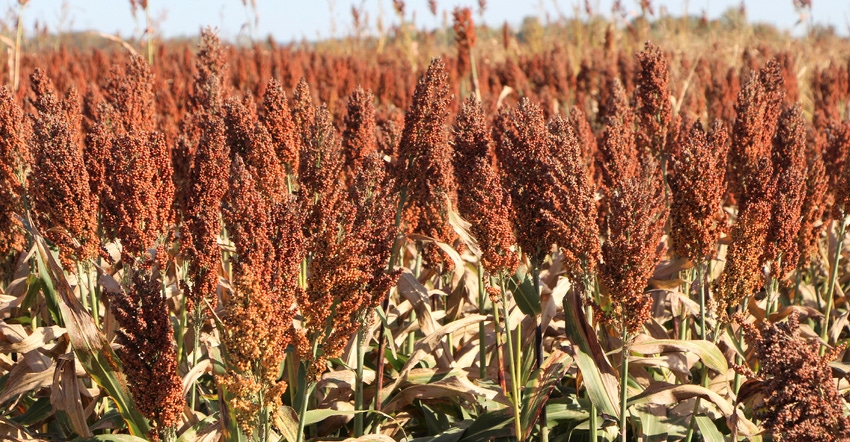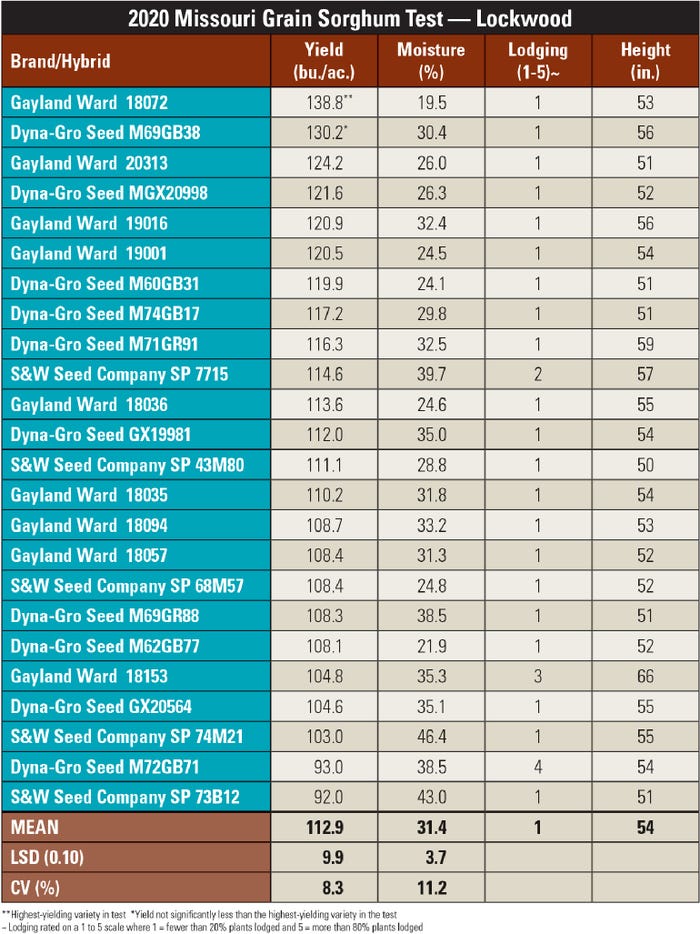
Grain sorghum, or milo, is not a top crop in Missouri. However, Mark Wieberg says results from this year’s MU Variety Testing Program may have farmers taking another look at this feed grain.
“It is one of those crops that costs less money to put in versus corn,” the University of Missouri senior research specialist responsible for MU’s Variety Testing Program says of grain sorghum. “And regardless of how wet or dry, you can knock a consistent yield off of it.”
Typical grain sorghum yields average about 72 bushels per acre. However, this year’s trials saw hybrids topping 160 bushels. “There are some nice-yielding hybrids in there,” Wieberg adds. “It may open eyes of farmers to give grain sorghum a try.”
Acreage shifts
Nationally, the U.S. plants 5.6 million acres to grain sorghum — with much coming from the Sorghum Belt, which runs from South Dakota to southern Texas. It is a crop planted primarily on dryland acres.
Weather plays a role in planting of grain sorghum for many farmers in Missouri. In nice weather, farmers turn to more corn acres. With wet weather delays, they shift toward grain sorghum.
Therefore, Missouri does not post as consistent production acres as the top producing states such as Kansas and Texas, which together account for about 4.35 million acres or 77% of the total U.S. grain sorghum production.

In the USDA 2020 Prospective Planting Report, grain sorghum acres in Missouri totaled 30,000. However, only five years ago, that number reached near 200,000. To add to the unsettled production numbers, five years before that, in 2010, Missouri farmers planted only 6,700 acres of grain sorghum.
Still, Wieberg says the past couple of years, because of the overall economics of grain sorghum, farmers asked for more variety testing.
Trial history
The University of Missouri began its performance testing program for grain sorghum hybrids in 1958 with 40 commercial entries. The number continued to grow to a peak in 1982 with 134 entries. However, like grain sorghum production across the country, the number of entries started to drop. By 2016, there were only 19 hybrids in the MU Variety Testing Program, and the grain sorghum trials stopped.
Wieberg says farmer interest in public trials brought back the public grain sorghum trials this year. “We solicited hybrids and found enough to move forward with a test plot,” he says.

The university wanted a representation of production for the state and chose four locations — Portageville, Columbia, Mooresville and Lockwood.
Only two locations yielded results in 2020. “Our Portageville location had extensive bird damage, and our Columbia location had to be replanted two times; it didn’t reach maturity before frost,” Wieberg says.
Still, he contends the results from the Mooresville and Lockwood locations are “solid.”
Results are in
The highest yields came from the Mooresville location in Livingston County. At this location, Beetsma Farms, researchers planted the plot June 3 and harvested Nov. 3. All plots in the trial are planted at 100,000 seeds per acre.
Topping the trial was Dyna-Gro Seed GX 19981 at 164 bushels per acre. The top three hybrids all posted above 160 bushel-per-acre yields. The overall yield average across 21 hybrids was 148.6 bushels.
MU researchers tested 23 hybrids at Russ and Dwight Niehoff's farm near Lockwood. The plot was planted June 2 and harvested Oct. 6. The entire plot average was 112.9 bushels per acre. Gayland Ward 18072 topped the plot with 138.8 bushels per acre.
Wieberg says the plot data offers farmers insight into what is possible growing grain sorghum in Missouri in a year such as 2020. “It was a good year, with good growing conditions," he says.
About the Author(s)
You May Also Like






